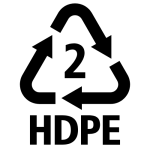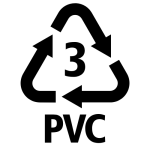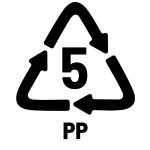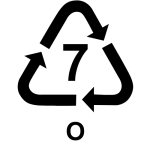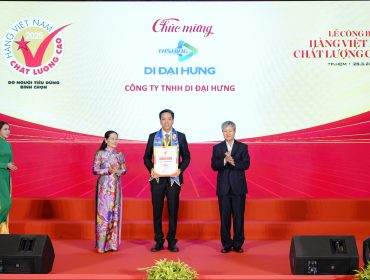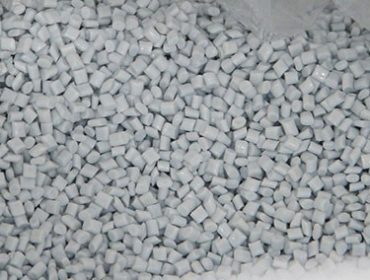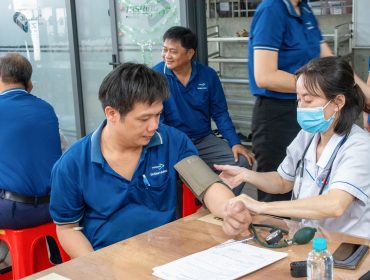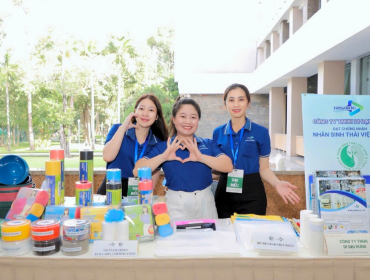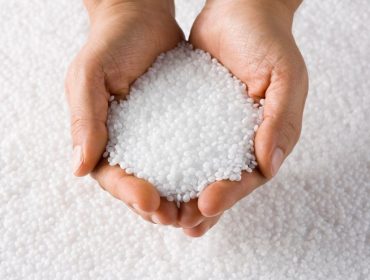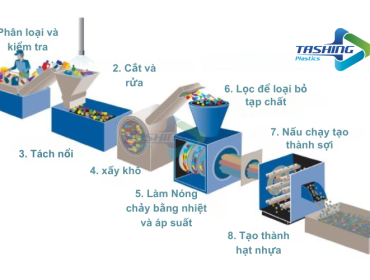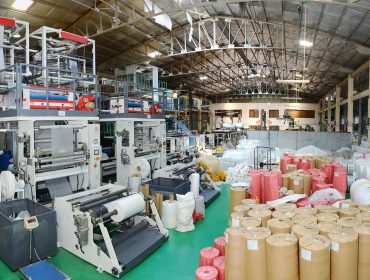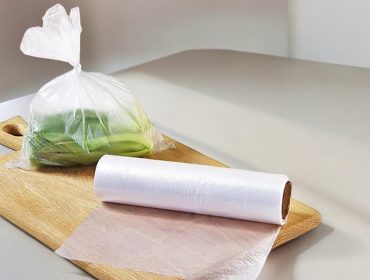Distinguish between types of plastic and recyclability
28/06/2024Plastic has become an indispensable part of modern life, permeating everything from our food packaging to our electronics. It’s lightweight, durable, and versatile, making it a ubiquitous material. However, the very qualities that make plastic so useful also contribute to its devastating environmental impact. With growing concerns about plastic pollution and its detrimental effects on ecosystems and human health, understanding and differentiating between various types of plastic becomes crucial for responsible consumption and effective waste management. This article delves into the diverse world of plastics, exploring their properties, recycling capabilities, and the implications for our environment.
Introduction
Plastic, broadly defined as a synthetic polymer, encompasses a wide array of materials with varying compositions and properties. These differences significantly influence their suitability for specific applications and ultimately determine their recycling potential. Understanding the complexities of plastic types and their unique characteristics is vital for making informed decisions regarding the use, disposal, and recycling of plastics.

The Recycling Process: A Look Behind the Scenes
Recycling plastic is not a straightforward process. It requires a series of steps to transform used plastic back into a usable form. The process typically involves:
1. Collection and Sorting
The first stage involves collecting plastic waste from various sources, such as homes, businesses, and public spaces. This collected plastic is then sorted based on its type, color, and cleanliness. This sorting step is crucial as it ensures that only compatible plastics are processed together, maximizing recycling efficiency.
2. Cleaning and Size Reduction
Once sorted, the plastic undergoes a cleaning process to remove contaminants like dirt, food residues, or other materials. This step is critical to ensure that the recycled plastic is free from impurities. Subsequently, the cleaned plastic is ground or shredded into smaller pieces, preparing it for the next phase.
3. Melting and Extrusion
The shredded plastic is heated to its melting point, transforming it into a molten state. This molten plastic is then passed through an extruder, which forces it through a die to form specific shapes, such as pellets or strands. These pellets or strands become the raw material for new plastic products.
4. Quality Control and Use
The final stage involves quality control measures to ensure that the recycled plastic meets the required standards. Depending on its quality, this recycled plastic can be used to manufacture a variety of products, such as bottles, furniture, or even clothing. However, it’s important to note that not all plastic types can be recycled effectively, and some recycled plastics may have reduced quality compared to virgin plastic.
Benefits of Plastic Recycling
Recycling plastic offers numerous benefits, contributing to a more sustainable future:
1. Conservation of Resources
Recycling plastic reduces the need to extract virgin resources, such as fossil fuels, which are used to produce new plastic. This conservation of resources helps minimize environmental damage associated with resource extraction and processing.
2. Reduced Landfill Waste
By diverting plastic waste from landfills, recycling helps alleviate the strain on landfill space. This is crucial as landfills contribute to soil and water contamination and release harmful greenhouse gases.
3. Environmental Protection
Plastic waste poses significant environmental risks, polluting our oceans and harming marine wildlife. Recycling reduces plastic waste in the environment, mitigating these threats and protecting ecosystems.
4. Economic Benefits
The recycling industry creates jobs and stimulates economic activity. Recycling plastic also provides a valuable secondary resource for manufacturers, reducing their production costs.
Classifying Plastics: A Focus on Recyclability
A key aspect of responsible plastic use is understanding the different types of plastic and their varying recycling capabilities. Plastics are typically categorized using a recycling code system, often represented by a number within a triangular symbol. This system simplifies the identification and sorting process, guiding appropriate recycling practices.
| Recycling Code | Plastic Type | Common Applications | Examples |
| 1 | PET (Polyethylene terephthalate) | Water bottles, food containers, food trays, textiles | Soft drinks, bottled water, cooking oil, ketchup, t-shirts, pillow covers |
| 2 | HDPE (High-density polyethylene) | Milk jugs, spray bottles, plastic cans, pipes, trash bags | Fresh milk, dishwashing liquid, floor cleaner, biodegradable trash bags, water pipes |
| 3 | PVC (Polyvinyl chloride) | Water pipes, electrical wires, windows, flooring, toys | Water supply pipes, electrical wires, window frames, vinyl flooring, dolls |
| 4 | LDPE (Low-density polyethylene) | Plastic bags, food wrap, packaging, soft bottles | Plastic bags, food wrap, candy wrappers, juice bottles, soap bottles |
| 5 | PP (Polypropylene) | Food containers, bottle caps, straws, toys, textiles | Lunch boxes, soda bottle caps, straws, strollers, diapers |
| 6 | PS (Polystyrene) | Foam containers, plastic cups, electronics, medical supplies | Food foam containers, bubble tea cups, computer cases, syringes |
| 7 | Other Plastics (ABS, PC, Tritan, etc.) | Water bottles, baby bottles, kitchenware, children’s toys, electronics | Sports water bottles, CDs, food trays, sunglasses |
Below, we provide a comprehensive analysis of the most common plastic types, exploring their applications, recyclability, and environmental considerations:
1. PET (Polyethylene Terephthalate): The Versatile Container Material
PET, commonly known as polyester, is a widely used plastic known for its strength, clarity, and recyclability. Its versatility makes it suitable for a diverse range of applications, leading to a high demand for PET recycling.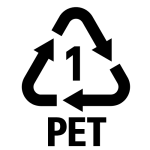
1.1 Applications
- Single-use beverage bottles (soda, water, juice)
- Food containers and jars
- Clothing fibers (polyester)
- Industrial applications (strapping, film, fibers)
1.2 Recyclability
- Highly recyclable: PET is one of the most commonly recycled plastics.
- Recycled PET (rPET) is often used to produce new bottles, food containers, and clothing fibers.
- Limited restrictions: PET can be recycled multiple times without significant degradation of its properties, making it a valuable recyclable resource.
1.3 Advantages
- Light weight: PET is lightweight, making it suitable for packaging and transportation.
- High strength: PET is strong and durable, resisting breakage and punctures.
- Clarity: PET is transparent, allowing clear visibility of the product contents.
- Barrier properties: PET can effectively prevent the passage of gases and moisture, making it suitable for food and beverage packaging.
1.4 Disadvantages
- Limited heat resistance: PET can soften or deform at high temperatures, limiting its use for hot-filled products.
- Potential for leaching: Concerns exist regarding potential leaching of chemicals, especially Bisphenol A (BPA), into food and beverages from PET containers. However, BPA-free PET options are increasingly available.
2. HDPE (High-Density Polyethylene): A Sturdy and Durable Choice
HDPE stands out for its high density and durability, making it a prime material for robust products that can withstand various stresses. Its good recycling properties contribute to its sustainable use across multiple industries.
2.1 Applications
- Milk jugs and water bottles

- Detergent bottles
- Shampoo bottles
- Toys and playground equipment
- Rigid pipes and containers
- Shopping bags (though thinner films may not be recyclable)
2.2 Recyclability
- Highly recyclable: HDPE is readily recyclable and often used in the production of new bottles, containers, and other products.
- Recycled HDPE (rHDPE) is often used for rigid products, such as pipes and containers.
2.3 Advantages
- High strength and stiffness: HDPE provides excellent structural integrity, making it suitable for a wide range of applications.
- Chemical resistance: HDPE withstands a broad spectrum of chemicals, making it suitable for various containers.
- Low permeability: HDPE’s low permeability restricts the passage of gases and liquids, making it ideal for storing products.
- Good moisture barrier: HDPE provides a good barrier against moisture, protecting products from damage.
2.4 Disadvantages
- Limited heat resistance: HDPE softens at higher temperatures, restricting its use in hot applications.
- Limited flexibility: HDPE is less flexible than some other plastics, making it unsuitable for applications requiring flexibility.
3. PVC (Polyvinyl Chloride): The Versatile but Controversial Plastic
PVC, also known as vinyl, is a highly versatile plastic with widespread applications. Despite its versatility, PVC has drawn significant criticism due to concerns about its environmental impact and potential health risks.
3.1 Applications
- Pipes, siding, and window frames

- Flooring and roofing materials
- Medical devices and tubing
- Packaging for food, pharmaceuticals, and other products
- Synthetic leather and other textiles
3.2 Recyclability
- Limited recyclability: PVC is difficult to recycle due to its heterogeneous composition containing chlorine and plasticizers.
- Recycled PVC (rPVC) is often used in lower-grade applications, such as floor tiles or insulation.
- Limited market demand: There is limited market demand for recycled PVC, further restricting its recycling potential.
3.3 Advantages
- Durability and longevity: PVC is highly durable and resistant to weathering, making it suitable for outdoor applications.
- Low cost: PVC is relatively inexpensive to produce compared to other plastics.
- Versatility: PVC can be shaped and molded into various forms, accommodating a wide range of applications.
3.4 Disadvantages
- Environmental concerns: PVC production and disposal release harmful chemicals, including dioxins, into the environment.
- Health risks: Concerns exist regarding the potential health risks associated with PVC exposure, particularly the leaching of plasticizers into food and water.
- Difficult to recycle: PVC’s complex composition and chlorine content make it difficult to recycle effectively.
4. LDPE (Low-Density Polyethylene): The Flexible and Versatile Film
LDPE is a pliable and flexible plastic widely used in film applications due to its low density, elasticity, and moldability. Its versatility comes with challenges in recycling, often leading to less-than-ideal outcomes.
4.1 Applications
- Plastic bags (grocery, shopping, trash)

- Food packaging (saran wrap, cling film, pouches)
- Bottles (sometimes, particularly squeeze bottles)
- Toys and other flexible products
4.2 Recyclability
- Limited recyclability: LDPE can be recycled, but it is often challenging to separate from other types of plastic.
- Recycled LDPE (rLDPE) is often used in manufacturing new films, bags, and non-food containers.
- Recycling rates are typically lower compared to other readily recycled plastics.
4.3 Advantages
- Flexibility and ductility: LDPE’s flexibility makes it suitable for creating films and bags.
- Moisture resistance: LDPE acts as an excellent barrier against water and moisture, making it ideal for food packaging.
- Chemical resistance: LDPE offers good resistance to various chemicals, ensuring product protection.
4.4 Disadvantages
- Not as robust as HDPE: LDPE lacks the stiffness and strength of HDPE.
- Lower melting point: LDPE has a lower melting point compared to HDPE, limiting its use in high-temperature applications.
- Recyclable, but challenges: Processing LDPE requires specific recycling infrastructure, making it less common in many communities.
5. PP (Polypropylene): The Versatile Material with Limited Recycling
PP is a strong and versatile plastic commonly used in various applications due to its durability and resistance to chemicals and heat. It poses recycling challenges, leading to limited recycling rates.
5.1 Applications
- Containers (yogurt tubs, margarine tubs, medicine bottles)

- Fibers (rugs, ropes, clothing)
- Caps and lids
- Food packaging (wraps, films)
- Auto parts, furniture, and other durable items
5.2 Recyclability
- Limited recyclability: PP can be recycled, but it is often mixed with other plastics, making separation difficult.
- Recycled PP (rPP) is used in various applications, including new containers, fibers, and some types of packaging.
- Recycling rates are generally lower than PET and HDPE due to challenges in sorting and processing.
5.3 Advantages
- Heat resistance: PP withstands higher temperatures than other common plastics, making it suitable for hot-fill applications.
- Chemical resistance: PP offers resistance to various chemicals, ensuring product stability.
- Good strength and stiffness: PP is strong and durable, making it suitable for structural applications.
- Lightweight: PP is lightweight, reducing transportation costs and conserving energy.
5.4 Disadvantages
- Limited recycling infrastructure: Recycling PP requires specific processing techniques, limiting its recycling availability in some regions.
- Susceptibility to ultraviolet (UV) degradation: PP can degrade when exposed to sunlight and UV radiation, affecting its long-term durability.
6. PS (Polystyrene): The Lightweight but Controversial Foam
PS, known for its lightweight and good insulating properties, is often used in packaging and disposable food containers. However, it’s widely criticized for its environmental impact and potential health risks.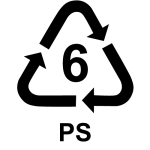
6.1 Applications
- Disposable food containers (cups, plates, cutlery)
- Packaging (foam peanuts, clamshells, insulation)
- Insulation materials
- Toys
6.2 Recyclability
- Low recyclability: PS is difficult to recycle due to its low density and tendency to break down into small fragments.
- Recycling efforts are limited to a few communities mainly focused on specific PS products, such as cups and containers.
- The majority of PS ends up in landfills, contributing to environmental pollution.
6.3 Advantages
- Light weight: PS is lightweight, making it suitable for packaging and disposable products.
- Good insulation: PS provides good insulation against heat and sound.
- Excellent shock absorption: PS cushions and protects products during shipping and handling.
6.4 Disadvantages
- Limited recyclability: Recycling PS is a challenging process, leading to low recycling rates.
- Environmental concerns: Polystyrene can persist in the environment for long periods, posing a long-term threat to wildlife and ecosystems.
- Potential health risks: Styrene, the monomer used to produce PS, is a volatile organic compound (VOC) that can be released from products, raising concerns about its potential health risks.
7. Other Plastic Types: A Diverse Landscape of Characteristics
Beyond the six key plastic types discussed above, a vast array of other plastics exists, each having unique properties and applications. These plastics may not be as widely recognized but play significant roles in diverse industries and consumer products.
7.1 Examples of Other Plastic Types
- ABS (Acrylonitrile Butadine Styrene): Used for strong and durable products like automotive parts, toys, and household appliances.

- PC (Polycarbonate): Known for its high strength, toughness, and transparency, used in eyeglasses, optical media, and water bottles.
- Nylon (Polyamide): Strong, durable, and moisture-resistant, used in clothing, carpets, and industrial applications.
- Acrylic (Polymethyl Methacrylate): Clear, lightweight, and highly durable, used in window panes, shower doors, and other transparent applications.
- Ethylene Vinyl Acetate (EVA): Flexible and strong, used in footwear, adhesives, and film applications.
7.2 Recyclability: A Spectrum of Capabilities
The recyclability of these “other” plastics varies significantly depending on their chemical composition and the availability of specific recycling facilities. Some may be readily recycled, while others pose significant challenges due to their complex structures or limited market demand.
7.3 Advantages and Disadvantages
Each of these “other” plastic types offers unique advantages, such as high strength, chemical resistance, or transparency. However, they also have disadvantages, such as limited recycling options, potential environmental concerns, and specific health risks. It is crucial to consider the potential environmental and health impacts before using these plastics.
Choosing the Right Plastic: A Guide for Sustainable Choices
With the diverse range of plastic types available, making informed choices becomes critical for minimizing our environmental footprint. When choosing plastic products, consider these factors:
- Recyclability: Opt for products made from readily recyclable plastics, such as PET and HDPE.
- Durability: Invest in durable plastic products that have a longer lifespan, reducing the need for frequent replacements.
- Compostability: Explore alternatives to traditional plastic, such as compostable plastics made from materials like cornstarch or sugarcane.
- Reusable alternatives: Whenever possible, choose reusable options, such as cloth shopping bags, reusable water bottles, and lunch containers.
Conclusion
Understanding the different types of plastic and their individual properties is critical for making informed decisions about their use and disposal. While plastics offer numerous advantages in terms of functionality, durability, and cost-effectiveness, we need to acknowledge their significant environmental impact.
By recognizing the varying recycling capabilities of different plastics, we can promote a more sustainable approach to plastic consumption. Emphasizing the use of readily recyclable plastics, prioritizing reusable options, and supporting innovative recycling technologies can contribute to a circular economy for plastics, minimizing waste and reducing environmental pollution.
Di Dai Hung Company Limited
Hotline: 028 3960 5688
![]() info@tashing.com.vn| Facbook: https://www.facebook.com/congtydidaihung
info@tashing.com.vn| Facbook: https://www.facebook.com/congtydidaihung

